Michael J. Behe's Blog, page 186
June 27, 2021
Birds: Magnetic field reception for navigation is a complete mystery
But it may be a quantum mechanical phenomenon, researchers say — thus solvable, as long as we are willing to work with quantum mechanics:
Some birds can sense Earth’s magnetic field, using it to navigate. But precisely how they do this has long remained a mystery. Now, researchers have confirmed that a protein found in bird eyes displays a quantum mechanical phenomenon which makes it sensitive to magnetic fields. The researchers suggest this mechanism could be behind birds’ magnetoreception abilities.
The paper is closed access.
Copyright © 2021 Uncommon Descent . This Feed is for personal non-commercial use only. If you are not reading this material in your news aggregator, the site you are looking at is guilty of copyright infringement UNLESS EXPLICIT PERMISSION OTHERWISE HAS BEEN GIVEN. Please contact legal@uncommondescent.com so we can take legal action immediately.Plugin by Taragana
An oldie from 2015: Human hands are “more primitive” than chimp hands
Human hands are comparatively anatomically primitive:
The human hand is a marvel of dexterity. It can thread a needle, coax intricate melodies from the keys of a piano, and create lasting works of art with a pen or a paintbrush. Many scientists have assumed that our hands evolved their distinctive proportions over millions of years of recent evolution. But a new study suggests a radically different conclusion: Some aspects of the human hand are actually anatomically primitive—more so even than that of many other apes, including our evolutionary cousin the chimpanzee. The findings have important implications for the origins of human toolmaking, as well as for what the ancestor of both humans and chimps might have looked like.
Michael Balter, “Michael Balter” at Science (July 14, 2015)
When we consider the difference in manual achievement, isn’t that a further argument for human exceptionalism?
See also: Human evolution at your fingertips
Copyright © 2021 Uncommon Descent . This Feed is for personal non-commercial use only. If you are not reading this material in your news aggregator, the site you are looking at is guilty of copyright infringement UNLESS EXPLICIT PERMISSION OTHERWISE HAS BEEN GIVEN. Please contact legal@uncommondescent.com so we can take legal action immediately.Plugin by Taragana
Does humanity depend on a “key genetic switch” that makes human brains grow larger than ape brains?
So organoid studies would suggest:
In a study of “mini-brains” (brain organoids), the size of a pea, grown in a dish and incapable of further development, researchers have discovered a “key genetic switch” that makes human brains grow three times larger than primate brains…
But what have we learned? Is larger brains really what makes us human? Then what about the people who function normally with a very reduced brain? Remember, they are functioning normally in a world where humans typically have very large brains. And, before medical imaging, no one knew that these people had hardly any brain.
News, “Do larger brains make us human? Is that all?” at Mind Matters News
Takehome: Some researchers believe that our diet led to a larger brain but they differ as to which food was the ultimate brain booster. Are we missing something here?
You may also wish to read:
Lemurs with brains 1/200 the size of chimps’ pass same IQ test. Such findings only accentuate the vast gap in intelligence between humans and lemurs, chimpanzees, or ravens today. Efforts to account for this gap in evolutionary terms have not been particularly successful.
and
Your mind vs. your brain: Ten things to know
Copyright © 2021 Uncommon Descent . This Feed is for personal non-commercial use only. If you are not reading this material in your news aggregator, the site you are looking at is guilty of copyright infringement UNLESS EXPLICIT PERMISSION OTHERWISE HAS BEEN GIVEN. Please contact legal@uncommondescent.com so we can take legal action immediately.Plugin by Taragana
Ten (or so) Anti-Intelligent Design Books You Should Read
I have posted the second video in my two part book recommendation series on the YouTube channel. In the previous video I highlighted many books that argue for intelligent design. My view is that proponents of design should face the strongest criticisms possible, and not be afraid of doing so. In line with this philosophy, in this video I talk about just a handful of the many books that attempt to refute ID. Again, I would be interested to know what others think are the best books that attempt to show ID is wrong.
Plugin by Taragana
June 26, 2021
From the Smithsonian Magazine on newly unearthed Dragon Man (homo longi)
Much of the text is the usual interminable ingroup squabble among Darwinians about “human speciation” but we do learn things of interest:
The Dragon Man appears to be a 50-something male who was likely a very large and powerful individual. The authors suggest his small hunter-gatherer community settled on a forested floodplain in a Middle Pleistocene environment that could be harsh and quite cold. The fossil is the northernmost known from the Middle Pleistocene, which may have meant that large size and a burly build were necessary adaptations.
Petraglia agreed that populations living in the region were likely pretty small and probably isolated. “Maybe that’s what’s creating this diversity in this group of hominins,” he says, noting that Pleistocene humans are known from the rainforests of southern China to the frigid north. “They were cognitively advanced enough, or culturally innovative enough, that they could live in these extreme environments from rainforests to cold northern climates,” he says.
Brian Handwerk, “A 146,000-Year-Old Fossil Dubbed ‘Dragon Man’ Might Be One of Our Closest Relatives” at Smithsonian Magazine
See also: “Massive” human head forcing rethink of evolution. At the Guardian: “Homo longi is heavily built, very robust,” said Prof Xijun Ni, a paleoanthropologist at Hebei. “It is hard to estimate the height, but the massive head should match a height higher than the average of modern humans.”
Copyright © 2021 Uncommon Descent . This Feed is for personal non-commercial use only. If you are not reading this material in your news aggregator, the site you are looking at is guilty of copyright infringement UNLESS EXPLICIT PERMISSION OTHERWISE HAS BEEN GIVEN. Please contact legal@uncommondescent.com so we can take legal action immediately.Plugin by Taragana
The Pentagon is now talking like ID types?
Well, the UFO report has been released: The brass have committed themselves to going “wherever the data takes us”: From Mind Matters News:
As promised, the Pentagon released its UAP (UFO) report. And what did they find? First, they
… lack sufficient data to determine the nature of mysterious flying objects observed by American military pilots including whether they are advanced earthly technologies, atmospherics or of an extraterrestrial origin. –
Steve Gorman, “Watershed U.S. UFO report does not rule out extraterrestrial origin” at Reuters via Yahoo News (June 25, 2021)
But read on:
The report marked a turning point for the U.S. government after the military spent decades deflecting, debunking and discrediting observations of unidentified flying objects and “flying saucers” dating back to the 1940s.
Steve Gorman, “Watershed U.S. UFO report does not rule out extraterrestrial origin” at Reuters via Yahoo News (June 25, 2021)
More than anything, the report marks a change in attitude. At one time, lack of sufficient data was, essentially, a basis for dismissing whatever was happening. Now they must, at least, take it seriously. For one thing, the superior technology might not be alien, it might be earthlings who are better equipped than the U.S. military. – News, “The Pentagon’s UAP (UFO) report signals a sharp attitude change” at Mind Matters News
Takehome: No, the brass didn’t report UFOs. But they reported enough mysteries to stop merely debunking and discrediting… and follow the evidence.
Our physics color commentator Rob Sheldon notes,
It’s a peculiar observation that intelligent design is allowed for SETI but not for biology. It is as if there is an invisible wall between the organic and inorganic, where the organic must be chance and the inorganic must be design. So Avi Loeb can hypothesize that Oumuamua is a designed space probe, and we should search the Moon for wreckage of previous space probes, but the presence of organic molecules on the Moon and on every comet we’ve explored is merely chance. Or the author of this SciAm blog, who thinks we have been visited by space probes in the past, but DNA from space is highly unlikely.
Rob Sheldon is also the author of Genesis: The Long Ascent and The Long Ascent, Volume II .
You may also wish to read:
The UAPs (UFOs) are “not caused by any U.S. advanced technology.” And that’s all the Pentagon probably really knows. Some, including physicist Mark Buchanan, hope we never find out if it’s aliens or not. (June 19, 2026)
Copyright © 2021 Uncommon Descent . This Feed is for personal non-commercial use only. If you are not reading this material in your news aggregator, the site you are looking at is guilty of copyright infringement UNLESS EXPLICIT PERMISSION OTHERWISE HAS BEEN GIVEN. Please contact legal@uncommondescent.com so we can take legal action immediately.Plugin by Taragana
Yes, plants remember things – they seem more like animals the more we learn
A big, less-heralded science finding of recent decades is that plants turn out to be more and more like animals. NOT like people but like animals:
Plants, we are learning, have internal means of remembering and keeping track of things:
In a study published in Nature Communications, researchers from Nara Institute of Science and Technology have revealed that a family of proteins that control small heat shock genes enables plants to ‘remember’ how to deal with heat stress…
“Heat stress is often repeating and changing,” says lead author of the study Nobutoshi Yamaguchi. “Once plants have undergone mild heat stress, they become tolerant and can adapt to further heat stress. This is referred to as heat stress ‘memory’ and has been reported to be correlated to epigenetic modifications.” Epigenetic modifications are inheritable changes in the way genes are expressed, and do not involve changes in the underlying DNA sequences. – Nara Institute of Science and Technology, “How to beat the heat: Memory mechanism allows plants to adapt to heat stress” at ScienceDaily (June 10, 2021) The paper is open access.
Of course, plants don’t have ideas, as such. What they may remember (have an internal record of) is physical things that happened to them. Epigenetics (the genetic changes that are not inherited but acquired from a life form’s experience and then passed on) may function as a sort of memory in the absence of a brain or mind.
Plants have other ways of remembering things that researchers have begun to learn about over the last decade or two. In some cases, they can transmit information through special cells.
–News, “If you do something to a plant, will it remember?” at Mind Matters News
Plants don’t have minds or brains. But minds and brains don’t turn out to be essential for just keeping track of things.
Takehome: People are becoming, more and more obviously outliers all the time. The pop science prediction had been “less and less.”
You may also wish to read:
Researchers: Yes, plants have nervous systems too. Not only that but, like mammals, they use glutamate to speed transmission (April 11, 2019)
Copyright © 2021 Uncommon Descent . This Feed is for personal non-commercial use only. If you are not reading this material in your news aggregator, the site you are looking at is guilty of copyright infringement UNLESS EXPLICIT PERMISSION OTHERWISE HAS BEEN GIVEN. Please contact legal@uncommondescent.com so we can take legal action immediately.Plugin by Taragana
Science journalist: No kidding, consciousness IS a Hard Problem
We don’t usually expect science writers to be as straightforward as Michael Hanlon (1964–2016) was in 2014. The temptation to chase after the latest buzz is probably hard to resist when you know that that’s what the Big Ideas crowd really wants anyway. But Hanlon resisted:
“Consciousness is in fact so weird, and so poorly understood, that we may permit ourselves the sort of wild speculation that would be risible in other fields. We can ask, for instance, if our increasingly puzzling failure to detect intelligent alien life might have any bearing on the matter. We can speculate that it is consciousness that gives rise to the physical world rather than the other way round. The 20th-century British physicist James Hopwood Jeans speculated that the universe might be ‘more like a great thought than like a great machine.’ Idealist notions keep creeping into modern physics, linking the idea that the mind of the observer is somehow fundamental in quantum measurements and the strange, seemingly subjective nature of time itself, as pondered by the British physicist Julian Barbour. – Michael Hanlon, “The mental block” at Aeon (October 9, 2013)”
News, “Science journalist: No hype. Consciousness is a HARD problem!” at Mind Matters News
But now, what about idealism?
Idealism is simply the mirror image of materialism. All mind instead of all matter. As philosopher of science Bruce Gordon has pointed out recently, it is a defensible position, in the light of what we now know from quantum physics. See, for example, In quantum physics, reality is what “we choose to observe. Idealism may be wrong, just as materialism may be wrong — but not in principle. Rather, on the evidence.
News, “Science journalist: No hype. Consciousness is a HARD problem!” at Mind Matters News
Takehome: Perhaps accepting the fact that the mind is immaterial may convert the problem from intractable to difficult but solvable in principle.
You may also wish to read: Mystery: Our brains divide up events but we experience them whole. That’s one of the conundrums of consciousness.
Copyright © 2021 Uncommon Descent . This Feed is for personal non-commercial use only. If you are not reading this material in your news aggregator, the site you are looking at is guilty of copyright infringement UNLESS EXPLICIT PERMISSION OTHERWISE HAS BEEN GIVEN. Please contact legal@uncommondescent.com so we can take legal action immediately.Plugin by Taragana
Sentience: Is it wrong to boil a lobster alive?
In Switzerland, it is now illegal to boil a lobster alive. Are the Swiss right? Is it cruel? The question bears on the concept of a self:
Part of the conundrum here is that we don’t know whether a crustacean like a crab, shrimp, or lobster has a sense of “self” — a minimal self, if you like.
A dog, for example, has a well-developed minimal self. He knows whose dog he is and where he stands with his house mates. He learns and he experiences pain and pleasure, just as humans do, though he does not reflect on his experiences or make moral choices. We assume that, if he suffers, he suffers pretty much as we would, without any of the consolations of abstract thinking. That fact probably makes his misery worse.
But now, let’s say if a crab learns something. Is its learning an attribute of a “crab self”? Or is it merely the learning of a natural automaton? Is there a lobster “self” to whom boiling alive is happening?
Perhaps it is ethically prudent to assume, along with the Swiss, that there may be a lobster self and take no chances. But we can’t really know at present.
We are left with a conundrum: How does a unified self that feels pain come to exist? And how do we distinguish between the use of information from the environment and self-awareness?
– Denyse O’Leary, “Can crabs think? Can lobsters feel? What we know now” at Mind Matters News
Takehome: How does a self that feels pain come to exist? And how do we distinguish information use — computer style — from self-awareness?
You may also wish to read:
Octopuses get emotional about pain, research suggests. The smartest of invertebrates, the octopus, once again prompts us to rethink what we believe to be the origin of intelligence. The brainy cephalopods behaved about the same as lab rats under similar conditions, raising both neuroscience and ethical issues.
and
In what ways are spiders intelligent? The ability to perform simple cognitive functions does not appear to depend on the vertebrate brain as such.
Copyright © 2021 Uncommon Descent . This Feed is for personal non-commercial use only. If you are not reading this material in your news aggregator, the site you are looking at is guilty of copyright infringement UNLESS EXPLICIT PERMISSION OTHERWISE HAS BEEN GIVEN. Please contact legal@uncommondescent.com so we can take legal action immediately.Plugin by Taragana
L&FP 46: A big questions challenge — confident objective knowledge vs grand delusion in a going-concern world
In recent weeks, we have seen again and again how the acid of hyperskepticism has reduced our civilisation’s confidence in self-awareness much less understanding of the world and its roots. Even as Evolutionary Materialistic Scientism, Officialdom and their media promoters (and censors) seek to create a dominant narrative. So, how do we attack this issue?
First, let’s reduce it to a graphic:
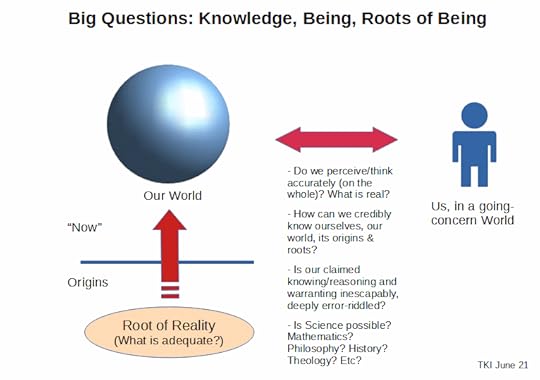
Once that is on the table, it is clear that our diverse worldviews and the extent to which any such can claim to be well warranted knowledge are at the crux of the matter. As a key aspect, as we are ourselves embedded (“apparently,” embodied with brains, senses tied to brains and self-awareness) in the going concern world, self-referentiality is inescapably entangled in the matter. So are questions of origins and the root of reality. The hyperskepticism-induced loss of confidence is manifest in our tendency to radical relativism, subjectivism and emotivism, all of which suffer serious self-referentiality challenges and undermine claimed knowledge.
Such surfaces the grand delusion challenge long ago exemplified by Plato in his parable of the cave:
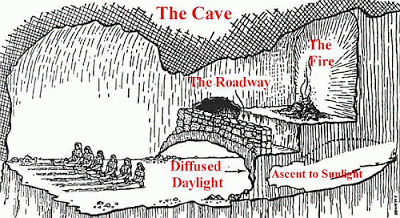 Plato’s Cave of shadow shows projected before life-long prisoners and confused for reality. Once the concept of general delusion is introduced, it raises the question of an infinite regress of delusions. The sensible response is to see that this should lead us to doubt the doubter and insist that our senses be viewed as generally reliable unless they are specifically shown defective. (Source: University of Fort Hare, SA, Phil. Dept.)
Plato’s Cave of shadow shows projected before life-long prisoners and confused for reality. Once the concept of general delusion is introduced, it raises the question of an infinite regress of delusions. The sensible response is to see that this should lead us to doubt the doubter and insist that our senses be viewed as generally reliable unless they are specifically shown defective. (Source: University of Fort Hare, SA, Phil. Dept.)Of course, we should not neglect the cynical, power-manipulation Overton Window dimension of this parable:
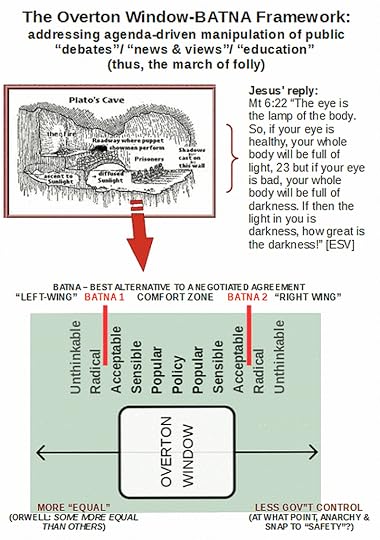
Yes, in a hyperskeptical-cynical world, somebody is looking to gain power and likely wealth from our loss of confidence. We must bear that in mind. Similarly, the now commonly used parable of blind men and an elephant is instructive:
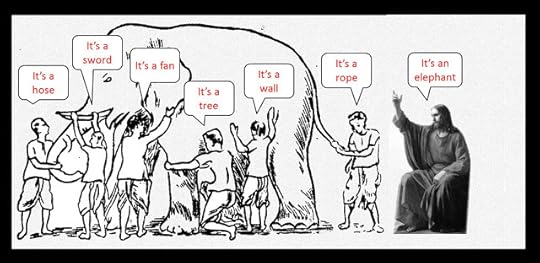
Here, we can focus Jesus of Nazareth’s remark on good/bad eyes, from his Sermon on the Mount, using words that tellingly echo Plato’s parable:
Matt 6:22 “The eye is the lamp of the body; so if your eye is clear [spiritually perceptive], your whole body will be full of light [benefiting from God’s precepts]. 23 But if your eye is bad [spiritually blind], your whole body will be full of darkness [devoid of God’s precepts]. So if the [very] light inside you [your inner self, your heart, your conscience] is darkness, how great and terrible is that darkness! [AMP]
That’s the elephant we face!
The question is, are we willing to acknowledge that someone has a better, more valid overall picture than we do? (Our tendency to cynical hyperskepticism tends to lock us into, “no.” It also tends to make us miss that relativism or the like equally claims to be the better big-picture. Incoherent self-referentiality, again.)
So, we come to a Reidian, common sense driven conclusion in two principles:
REID+, 1 — Rejection of Grand Delusion: Any world-scheme or alleged first principle of thought that leads to or invites a grand delusion inference is self-referentially absurd, and
REID+, 2 — Principle of Common Sense Credulity: While our common sense reliance on our senses and perceptions may be mistaken in detail, the inference that our common sense view of the going-concern world we share is delusional on the whole is thus absurd.
In that light, we can address the chain of concerns in the first graphic above:
We have reason to believe our common sense experience of the going-concern, everyday world, though limited and subject to correction in detail (and obviously a macroscopic, slow-speed, localised view), is on the whole reliable and reasonably accurate; thus, Plantinga-sense fit for purpose relative to knowledge acquisition.Knowledge in the going-concern world thus becomes possible on three levels: first, our personal world experience as self-aware creatures is just that, undeniably our experience. If one is appeared to redly and roundly, that is a datum of experience. Secondly, as we can see from 2 + 3 = 5 — i.e. || + ||| –> ||||| — or error exists or inescapable first principles [including first principles . . . and, yes, associated Ciceronian first duties . . . of right reason], there are certain truths that are self-evident, certain, plumb line that — while never nearly enough to frame and furnish a worldview — serve as key tests for soundness. Third, for practical thought, work, education, media, science, governance, community and life, a weaker, corrigible sense of knowledge is also reasonable: warranted, credibly true (so, tested and reliable) belief. This weak sense may indeed have in it various errors, but is corrigible in light of first self evident principles informed by our experiences. However, such cannot amount to a Plato’s cave grand delusion, on pain of collapsing credibility of rationality thus our own selves as rational creatures.In this light, we can dismiss general hyperskepticism as a grand delusion fallacy; and if it is selectively applied to what one is inclined to dismiss (oh, YOU have to prove beyond all arbitrary doubt that . . .) , it is little more than an excuse for question-begging hostile closed mindedness.Further to these, disciplines of thought are feasible and can build up valid bodies of credible but corrigible knowledge claims: philosophy, ethics, physics, mathematics, sciences and arts generally, including history, theology etc.We can directly apply the above to an analysis of ourselves, i.e. we can partially and yet credibly form a self-understanding. A useful framework for this is the Smith model:

Simplifying for our purposes:
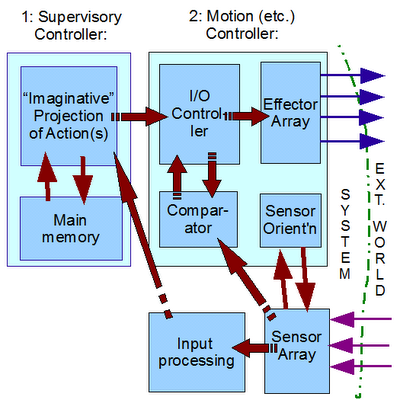 The Eng Derek Smith Cybernetic Model
The Eng Derek Smith Cybernetic ModelHere, we see that a two-tier cybernetic loop controller view allows us to raise the issue that the supervisory controller may embed an oracle expressing volition and intuition (including moral intuition) etc, allowing transcending of undecidability and halting problems etc that plague Turing-based computational substrates.
Where, obviously, such an oracle is not simplified to being a higher level Turing machine; that would only export the Turing problem up one level.
When queried or informed implying a query, the oracle issues a single stage answer and is a black box relative to the Turing paradigm. Thus to some degree it embeds a knowledge and intuitions base. In addition, in supervisory state, it frames the context in which action is taken, being further informed by rational, responsible (so, moral sense, conscience-guided) freedom.
From that going concern self-model, we may proceed to address the basis for, dynamics of and origins of a world that includes such creatures. Notice, this is an onward question, for without a frame for rational, responsible, knowing, free but guided thought, decision and action, there is no basis for addressing how can we know a now passed past of origins and linked substructure on roots of reality. (The attempt to hopelessly entangle ontology with epistemology, fails.)
In that context, we can immediately see that causes create effects, which may come in degrees. How much sugar is in a glass of water affects how sweet it will taste. This has immediate applications, e.g. here is a video screenshot I recently shared with policy influencers, i/l/o issues on Ivermectin — and note, this is not to excite a side-debate. (Yes, I am aware of the report of a study on Ivermectin, but frankly fear it can be twisted into a kill-shot attempt given the toxic, ideological and interests distorted state of such research.) Note, Peru is a state with about 33 million people in 25 states, comparable to Canada at 36 millions:
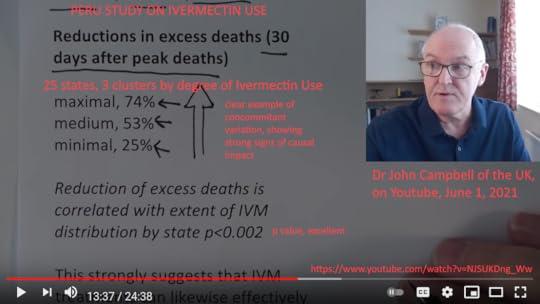
It is in that context (with other similar real-world, observational study/experience driven results/evidence) that the Frontline Doctors have just challenged Officialdom on Ivermectin:
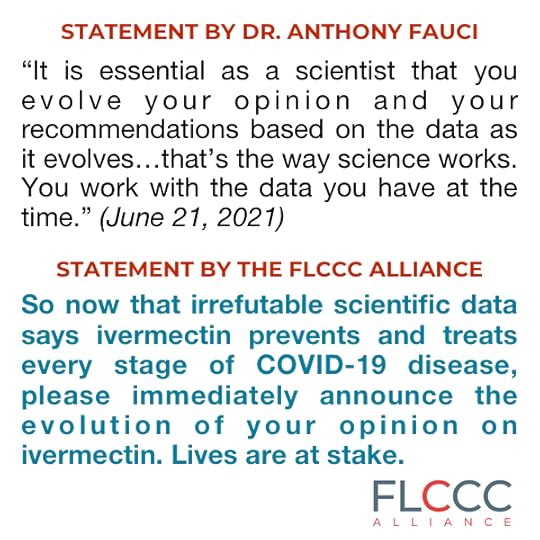
Underlying, given intent to address roots of reality, is the logic of being . . . which we can know based on analysis:
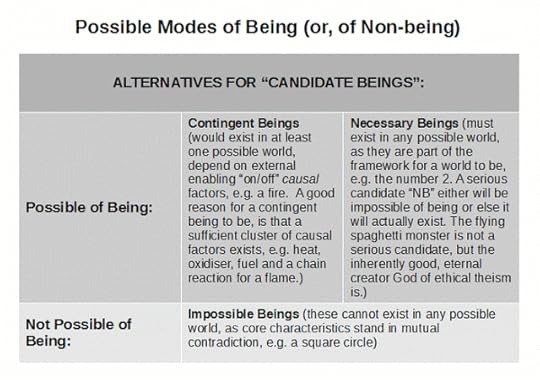
Compare, a flame:
 An igniting match (a contingent being)
An igniting match (a contingent being). . . with the fire tetrahedron, which gives causal conditionality:
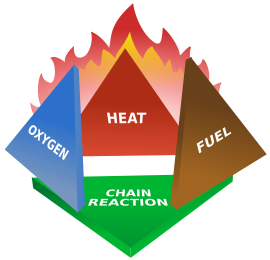
Fires are contingent, possible beings, even as square circles are impossible of being:
 One and the same objectcannot be circular andsquare in the samesense and place at the same time
One and the same objectcannot be circular andsquare in the samesense and place at the same timeSo, now, we can contemplate another order of possible being. To see it, try to imagine a distinct world in which two-ness, distinct identity etc do not exist. Or where it begins or may cease. Immediately, such fails as a distinct world W must differ from its neighbour W’ by having some A not in W’, in effect W = {A|~A} where ~A = W’. We see that two-ness is part of the framework for any world, so once there undeniably is a world [ours] it is a necessary being, part of the fabric of any world. That applies to mathematics and its universal power, but it shows that necessary, world framework entities are real.
The root of reality, world zero, W0, in effect, embeds such beings with the additional point that through origins processes such must account causally for this world, We.
This brings to bear issues on fine tuning evidence, the complex, functionally specific, algorithm, code and language using framework of cell based life, body plan biodiversity requiring 10 – 100+ million bits of incremental information per plan, and our own morally governed, minded life.
Those questions and many more are not going to go away quietly simply because they are inconvenient to today’s establishment. END
Copyright © 2021 Uncommon Descent . This Feed is for personal non-commercial use only. If you are not reading this material in your news aggregator, the site you are looking at is guilty of copyright infringement UNLESS EXPLICIT PERMISSION OTHERWISE HAS BEEN GIVEN. Please contact legal@uncommondescent.com so we can take legal action immediately.Plugin by Taragana
Michael J. Behe's Blog
- Michael J. Behe's profile
- 219 followers



